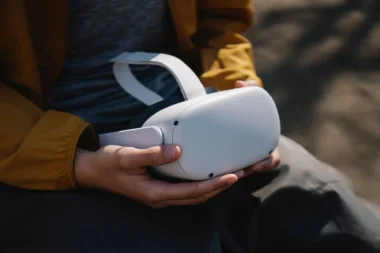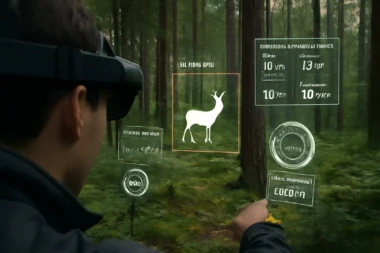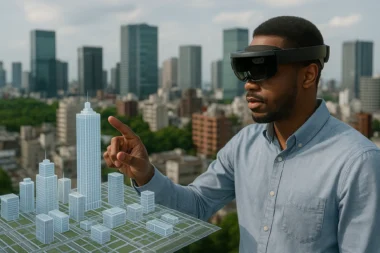Introduction:
Virtual reality (VR) has reached new heights, with standalone headsets offering six degrees of freedom (6 DoF). These cutting-edge devices empower users to move freely within the virtual world, providing a level of immersion and interaction previously unseen.
Design:
Standalone VR headsets with 6 DoF are designed for user mobility and comfort. Here are some key design aspects:
1. All-in-One Design: Unlike tethered VR headsets that require connections to a computer or gaming console, standalone headsets integrate all the necessary components within the device. This eliminates the need for external hardware and provides users with a portable, self-contained VR experience.
2. Ergonomic Build: These headsets prioritize comfort, featuring adjustable straps, cushioned padding, and lightweight materials. The ergonomic design ensures a snug fit and minimizes discomfort, allowing users to immerse themselves in the virtual world for extended periods.
Components:
Standalone VR headsets with 6 DoF incorporate several essential components to enable immersive experiences. Here are some key features:
1. Display: The headset integrates high-resolution displays, typically OLED or LCD, to deliver sharp and vibrant visuals. The displays are positioned in front of the user’s eyes, providing a wide field of view for an immersive visual experience.
2. Tracking System: 6 DoF tracking enables precise movement tracking in the virtual environment. This is achieved through a combination of sensors, such as accelerometers, gyroscopes, and magnetometers, which capture the orientation and position of the headset in real time. This information allows users to move and explore the virtual world freely.
3. Processing Unit: Standalone VR headsets house a powerful onboard processing unit, which handles the rendering of graphics, audio, and other computational tasks. This eliminates the need for an external device, enabling users to experience high-quality VR without being tethered to a computer.
4. Input Mechanisms: These headsets provide various input mechanisms for user interaction within the virtual environment. This may include built-in buttons, touch-sensitive panels, or handheld controllers that allow users to navigate menus, interact with objects, and trigger actions.
Algorithm:
While the specific algorithm used in standalone VR headsets with six degrees of freedom (6 DoF) may vary across different manufacturers and models, the following is a general overview of the algorithmic process involved:
1. Sensor Data Acquisition: The headset’s tracking system collects data from a combination of sensors, such as accelerometers, gyroscopes, and magnetometers. These sensors capture the orientation and position of the headset, as well as the user’s head movements.
2. Sensor Fusion: The acquired sensor data is processed using sensor fusion algorithms. These algorithms combine and integrate the data from different sensors to estimate the headset’s precise orientation and position in three-dimensional space. Sensor fusion techniques, such as Kalman or complementary filtering, are commonly employed to minimize noise, compensate for sensor biases, and provide accurate tracking information.
3. Data Calibration: Calibration algorithms may calibrate and align the sensor data to ensure accurate tracking. This process involves accounting for any sensor drift, bias, or misalignment, which can be performed during the setup or initialization phase of the VR headset.
4. Position and Orientation Estimation: Based on the fused sensor data, the algorithm estimates the headset’s position and orientation in real-time. This estimation allows tracking the user’s head movements as they explore the virtual environment.
5. Rendering and Display: The estimated position and orientation data are then used to render the appropriate visuals and audio for the virtual environment. The rendering considers the user’s viewpoint and adjusts the perspective and depth to match their head movements, creating a seamless and immersive VR experience.
6. Input Recognition: Input recognition algorithms may be employed if the headset includes additional input mechanisms, such as controllers or touch-sensitive panels. These algorithms interpret the user’s input signals, such as button presses or gestures, and map them to corresponding actions or interactions within the virtual environment.
7. Real-Time Feedback: The entire algorithmic process operates in real-time, continuously updating the rendered visuals and audio based on the user’s head movements and interactions. This feedback loop ensures a seamless and responsive VR experience where the virtual world reflects the user’s actions and inputs with minimal latency.
Working Principle:
The working principle of standalone VR headsets with 6 DoF involves a combination of tracking, processing, and rendering. Here’s a simplified overview of the process:
1. Tracking: The onboard tracking system captures the user’s real-time head movements, including rotation and translation. This is achieved through integrated sensors that detect changes in orientation and position.
2. Processing and Rendering: The headset’s onboard processing unit receives the tracking data and uses it to update the virtual environment accordingly. The 3D graphics, audio, and other elements are rendered based on the user’s viewpoint, creating an immersive experience corresponding to their head movements.
3. Input and Interaction: Users can interact with the virtual environment using the provided input mechanisms, such as buttons or controllers. These input signals are transmitted to the processing unit, which interprets them and triggers corresponding actions or interactions within the virtual world.
4. Real-Time Feedback: The headset continually updates the displayed visuals and audio based on the user’s movements and interactions. This real-time feedback creates a sense of presence and immersion, allowing users to navigate and explore the virtual world with freedom and natural movement.
Conclusion:
Standalone VR headsets with six degrees of freedom have revolutionized the VR landscape, offering users unprecedented freedom of movement and immersion. With their all-in-one design, ergonomic build, and robust components, these headsets provide a portable and seamless VR experience. Combining tracking, processing, and rendering enables users to explore virtual worlds with unmatched realism and interactivity. As technology advances, standalone VR headsets with 6 DoF can redefine how we interact with virtual environments and unlock a new era of immersive experiences.



